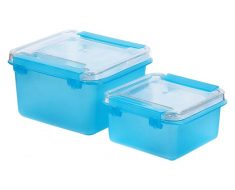In a recent study published in the Journal of the Royal Society, researchers found that indoor relative humidity (RH) modulates the severity of coronavirus disease 2019 (COVID-19) outbreaks, and intermediate RHs between 40 to 60% are robustly associated with better COVID-19 outcomes.

Background
Studies seeking to link COVID-19 outbreaks and environmental conditions primarily focused on outdoor temperature, humidity, and ultraviolet light. They used differing data collection processes and statistical methodologies. The timeframes and geographical regions of these studies also varied, inadvertently leading to selection bias and reducing the generalizability of the results. Further robust studies are needed to confidently elucidate the seasonal dependency of severe acute respiratory syndrome CoV-2 (SARS-CoV-2) outbreaks.
In temperate zone countries, people heat indoor spaces to maintain comfortable ambient temperatures of approximately 20–24°C, which alters the indoor RH. RH between 40% and 60% (intermediate) minimizes the risk of disease transmission, especially from respiratory viruses, such as SARS-CoV-2 and influenza. The occupants of heated indoor spaces experience low RH during the colder months, which likely adversely impacts their health. It increases viral stability and transmission but reduces the host's mucous barrier integrity to pathogens.
About the study
In the present study, researchers hypothesized that indoor RH might have been partially responsible for the observed regional heterogeneity in global COVID-19 outcomes. They proposed that indoor, not outdoor, environment is more relevant or closely correlated with COVID-19 spread and severity. So they pursued answers to questions, such as regional differences in COVID-19 severity and epidemic dynamics and how the regional variability in COVID-19 related to indoor relative humidity levels. Additionally, they investigated whether the association between the two could withstand variations in methodologies and confounding factors, such as government response and outdoor weather conditions.
First, the team accumulated a dataset with global coverage of the coronavirus outbreaks. They aggregated data by region to facilitate comparisons of temperate and tropical regions. The researchers selected 121 countries with a minimum of 50 confirmed COVID-19 deaths and extracted their COVID-19 statistics from the Johns Hopkins University (JHU) and European Centre for Disease Prevention and Control (ECDC) datasets. They paired each country's geographical centroid with meteorological data. RH is the relative measurement of the actual saturation vapor pressure ratio. The team computed the average indoor conditions for each country for the new COVID-19 deaths, the difference in these deaths, and the percent change in new deaths for each country.
They examined the environmental conditions associated with good or bad COVID-19 outcomes in a case-control fashion for more reliable quantitative predictions. The team also computed the odds of a better or worse COVID-19 outcome based on exposure to extreme or intermediate RH conditions. Any value greater than 1.0 indicated that intermediate RH was associated with fewer new deaths and negative day-to-day change in new deaths (better outcomes). Finally, the team validated their findings against widely varying government intervention stringencies, ‘low,’ ‘medium,’ and ‘high.’ They calculated common odds ratios with the time-lagged government responses and the time-lagged indoor RH.
Study findings
The researchers used a rigorously processed extensive global dataset of COVID-19 statistics and meteorological variables, with extrapolated and validated indoor RH levels. The dataset was highly complex and noisy concerning the COVID-19 outbreak magnitude and reporting conditions. Yet, the same general patterns tended to persist even when differing time lags and applying different data treatments.
The researchers, thus, noted a systematic association between COVID-19 and indoor RH. However, as expected, the results could not elucidate a causal relationship between RH and respiratory viral diseases. Indeed, this relationship is complex and multifaceted from physiological and biophysical standpoints.
The researchers noted a clear difference between COVID-19 outbreak dynamics in the three geographical regions. For Northern Hemisphere (NH) countries, COVID-19 deaths spiked from March to May before gradually decreasing as summer arrived. Conversely, for SH countries, COVID-19 deaths were relatively flat until spiking from June to August (winter months). Finally, Tropical countries displayed a consistent rise in new COVID-19 deaths across the entire timescale. Together, these results demonstrated that while temperate countries in NH & SH experienced worse viral outbreaks during seasonal drops in indoor RH, the tropical zones experienced increased viral outbreaks at high indoor RH.
Intriguingly, modeling the COVID-19 outbreak versus indoor RH metrics using Huber's T weighting (linear) function showed a negative relationship between indoor RH and COVID-19 for temperate regions and the opposite for tropical countries. The results remained robust even when the team applied a non-parametric locally weighted scatterplot-smoothing (LOWESS) technique to the same data.
Regardless of low, medium, or high government response stringencies, the relationship between indoor RH and outbreak severity remained conserved. Similarly, varying outdoor weather variables, such as absolute humidity (AH), temperature, and UV, did not impact the observed relationship between COVID-19 outbreak severity and indoor RH. Notably, it remained consistent across different AH levels, pointing to the physical processes governed by RH, namely evaporation and condensation. Indeed, indoor RH could modulate COVID-19 spread and severity regardless of the external weather conditions.
Conclusions
A detailed analysis of the associations between regional indoor RH and COVID-19 spread and severity pointed toward a robust pattern: COVID-19 outcomes are less severe at indoor RH levels between 40 and 60%. Follow-up top-down studies of the population dataset could investigate the indoor RH hypothesis at higher spatial resolution. Bottom-up biophysical experimental–theoretical investigations could shed light on the multifaceted mechanisms and rationalize the inconsistency in results.
Nevertheless, compared to other highly disruptive measures (e.g., public lockdowns), it would be easier and cost-effective to set up humidity control systems in some indoor settings. Indoor RH optimization would also achieve high compliance. So the authors proposed that maintaining indoor RH between 40% and 60% could complement existing COVID-19 countermeasures and contribute to the efforts to minimize indoor disease transmission.
- Verheyen C. A., Bourouiba L., (2022). Associations between indoor relative humidity and global COVID-19 outcomes. Journal of the Royal Society Interface. doi: https://doi.org/10.1098/rsif.2021.0865 https://royalsocietypublishing.org/doi/10.1098/rsif.2021.0865
Posted in: Medical Science News | Medical Research News | Disease/Infection News
Tags: Bottom-Up, Coronavirus, Coronavirus Disease COVID-19, covid-19, heat, Influenza, Respiratory, SARS, SARS-CoV-2, Severe Acute Respiratory, Severe Acute Respiratory Syndrome, Syndrome, Top-Down

Written by
Neha Mathur
Neha is a digital marketing professional based in Gurugram, India. She has a Master’s degree from the University of Rajasthan with a specialization in Biotechnology in 2008. She has experience in pre-clinical research as part of her research project in The Department of Toxicology at the prestigious Central Drug Research Institute (CDRI), Lucknow, India. She also holds a certification in C++ programming.
Source: Read Full Article





